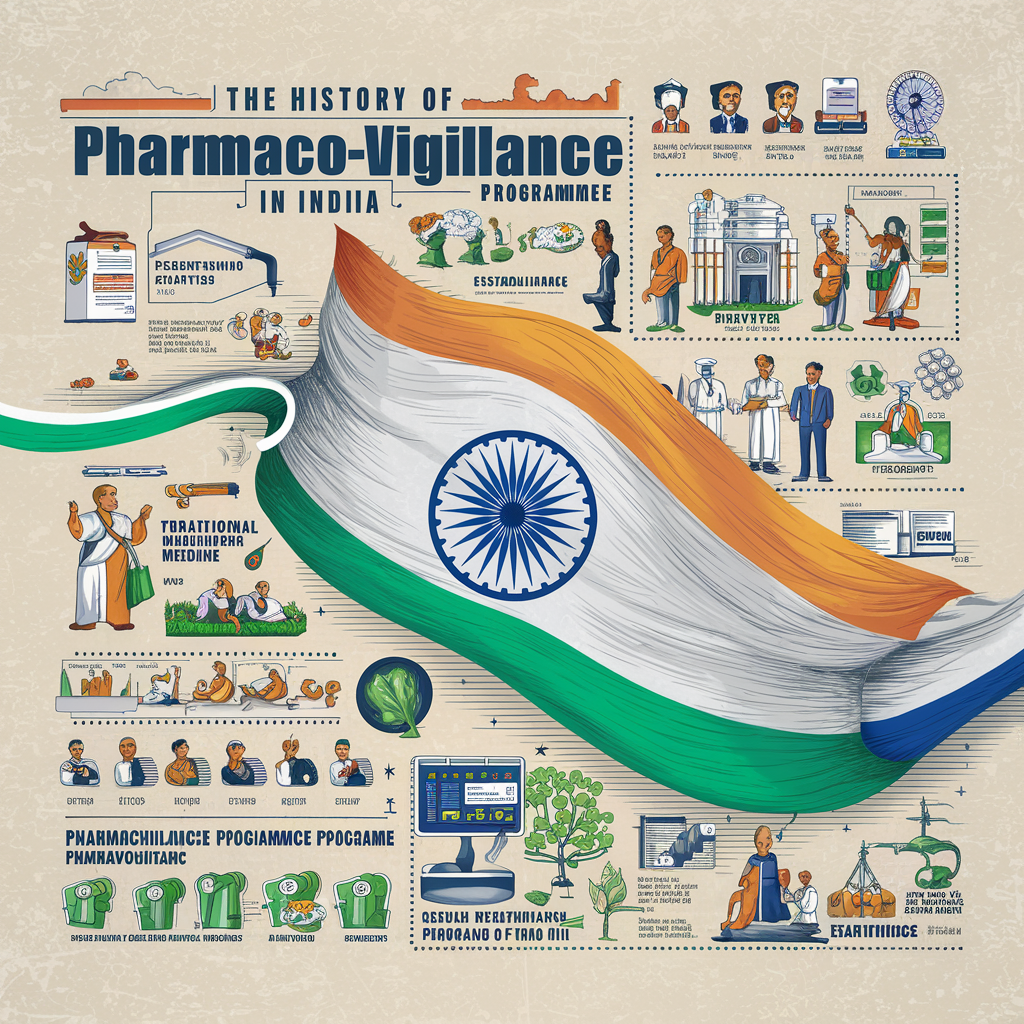History of Pharmacovigilance in India
Join our community on Telegram!
Join the biggest community of Pharma students and professionals.

Overview of the key milestones in the development of pharmacovigilance in India:
Pharmacovigilance in India has a relatively recent history, with its foundations laid in the early 1980s.
1. Establishment of the National Pharmacovigilance Program (NPP): In 2004, the Indian Pharmacopoeia Commission (IPC) launched the National Pharmacovigilance Program with the goal of promoting the safe and rational use of medicines in India. The NPP aimed to collect, monitor, and analyze information about adverse drug reactions (ADRs) from healthcare professionals and consumers.
2. The Central Drugs Standard Control Organization (CDSCO): CDSCO is the regulatory authority responsible for drug approval and regulation in India. It plays a critical role in overseeing pharmacovigilance activities in the country and collaborating with the IPC for effective implementation.
3. Partnership with the World Health Organization (WHO): India collaborated with the WHO to improve its pharmacovigilance capabilities. The WHO provided technical assistance and training to enhance the country's ability to detect and respond to adverse drug reactions.
4. Indian Pharmacopoeia Commission (IPC) as a National Coordination Center: The IPC was designated as the National Coordination Center (NCC) for pharmacovigilance in India. It coordinates pharmacovigilance activities across the country, including data collection, analysis, and dissemination of safety information.
5. Adverse Drug Reaction Monitoring Centers: India established regional Adverse Drug Reaction Monitoring Centers (AMCs) to strengthen data collection and reporting. These centers collaborate with healthcare facilities and professionals to collect ADR reports.
6. Pharmacovigilance Program of India (PvPI): In 2010, India officially launched the Pharmacovigilance Program of India (PvPI) as part of its commitment to patient safety. PvPI is a comprehensive program that focuses on monitoring and reporting adverse drug reactions and promoting rational drug use.
7. Collaboration with the World Health Organization Collaborating Centre for International Drug Monitoring (WHO-UMC): India is a member of the WHO-UMC network, which allows the country to participate in global pharmacovigilance efforts and contribute to the WHO's international drug monitoring database.
8. Regulatory Reforms: Over the years, India has implemented regulatory reforms to strengthen pharmacovigilance. The introduction of the Schedule Y amendment in 2015 made it mandatory for pharmaceutical companies to submit safety data, including adverse drug reactions, to the CDSCO.
9. Expansion of Reporting: Efforts have been made to increase awareness among healthcare professionals and the general public about the importance of reporting adverse drug reactions. This has led to a gradual increase in the number of ADR reports received by the PvPI.
Pharmacovigilance in India continues to evolve and improve as the country faces new challenges and seeks to ensure the safe and effective use of medications for its population. The collaboration with international organizations and the continuous efforts of the government and healthcare stakeholders have contributed to the growth and development of pharmacovigilance in the country.

